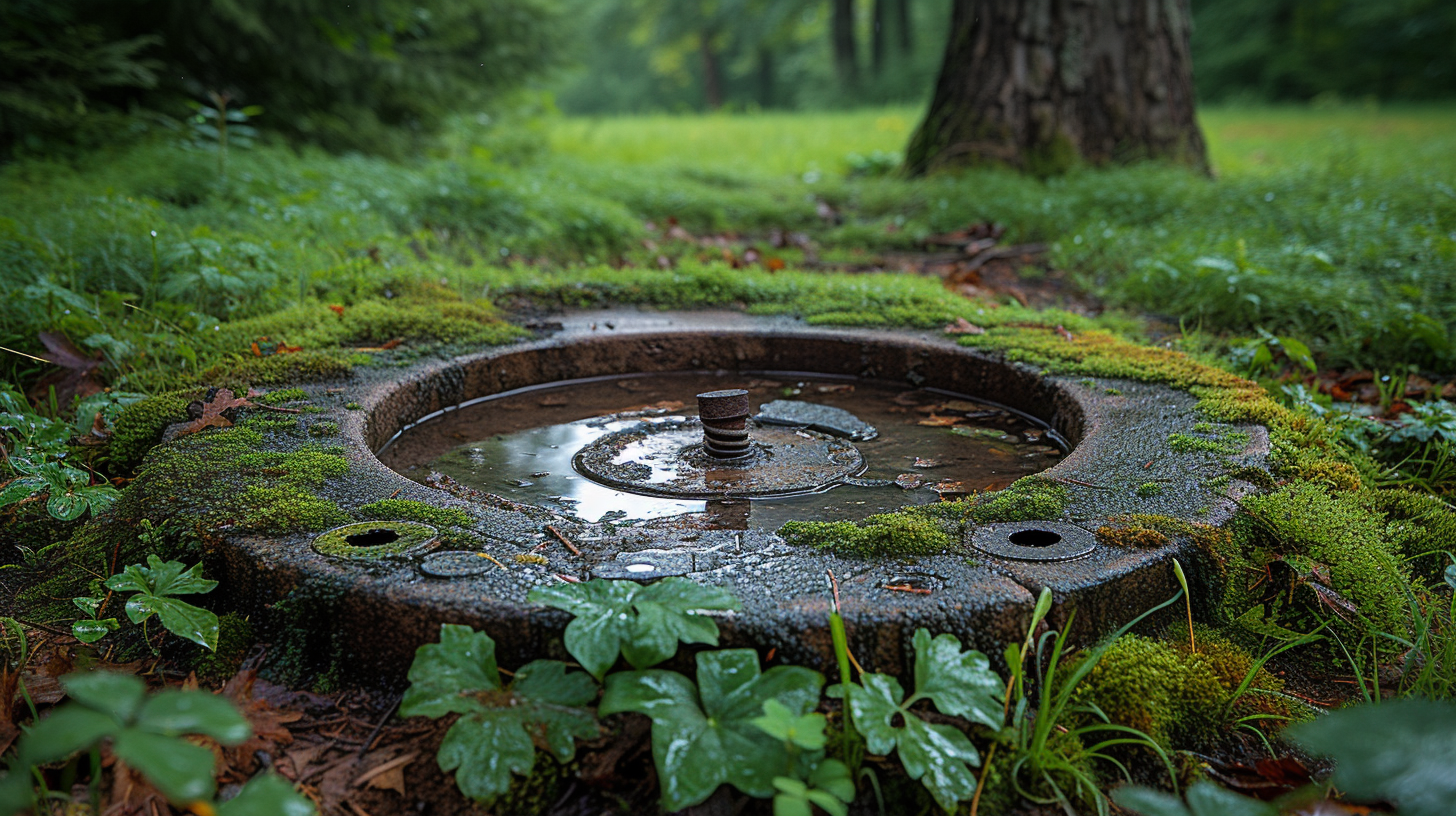Key points
• Initial Installation Costs: The cost to install a new septic system can vary widely, depending on factors such as system type, size, and soil conditions. On average, prices range from $3,000 to $10,000 for conventional systems, but more complex systems like aerobic or mound systems can cost upwards of $10,000 to $20,000.
• Maintenance and Repair Expenses: Ongoing maintenance is essential for a septic system and can include pumping, which is recommended every 3 to 5 years, costing between $200 and $500. Repairs for parts like baffles or effluent filters may add additional costs, and significant repairs or component replacements can be several thousand dollars.
• Permit and Inspection Fees: Local regulations often require permits and inspections for installing or repairing a septic system. These fees can range from $250 to $1,000 or more, depending on the region and the complexity of the project. It’s important to factor in these regulatory costs when budgeting for a septic system.
Contents
- 1 Key points
- 2 Overview of Cost Factors
- 3 Economics Behind Septic System Installation and Upkeep
- 4 Local Regulatory Impacts
- 5 Budgeting Tips
- 6 Long-Term Operation Expenses
- 7 Resale Value and Septic Systems
- 8 Frequently Asked Questions (FAQ)
Overview of Cost Factors
A pile of variables can tweak the total cost of installing and maintaining a septic system. Think about things like tank size, soil type (because some soils treat wastewater better than others), system configuration (you’ve got choices like conventional, sand filter, or aerobic treatment), permit fees (we’re talking bureaucracy here), tank material (plastic, fiberglass, or concrete), and installation based on local environmental regulations. Now let’s take a gander at breaking down those installation costs by tank size:
| Tank Size (gallons) | Installation Cost (approx.) |
|---|---|
| 750-900 | $3,000-$4,500 |
| 1,000 | $5,000-$6,000 |
| 1,250 | $6,500-$8,500 |
| 1,500 | $7,000-$10,000 |
The bottom line is when it comes to septic systems the devil’s in the details. Forewarned is forearmed: knowing what drives costs means you’re steering clear of potential wallet disasters and setting yourself up for smoother sailing.
When it comes to the essentials of septic system installation, it’s important to understand that this process is more than just digging a hole and dropping in a tank. In truth, it involves careful planning and consideration, ensuring the system meets both environmental requirements and personal needs. Overall, the goal is to install a safe and efficient system that complies with local regulations.
Types of Septic Systems and Their Costs
When we look at different septic systems, we’ve basically got two players on the field: conventional systems and alternative systems. The conventional crew includes gravity- and pressure-distribution systems, commonly easier on the wallet with costs that won’t make you do a double-take. On the other hand, alternative systems earn their name by stepping up when soil conditions throw a curveball or when space plays hard to get. Needless to say, these can come with a heftier price tag due to their complexity.
Conventional Systems
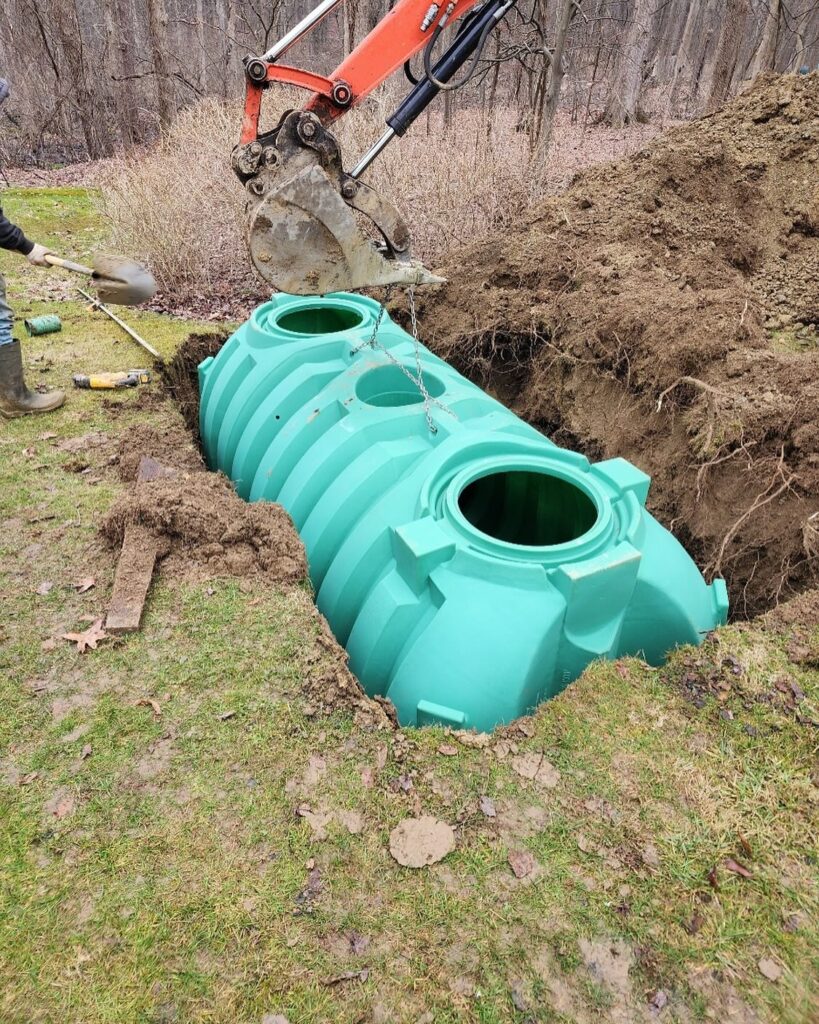
Traditional yet efficient, conventional septic systems are often seen as the go-to choice for many homeowners due to their straightforward design and relatively lower installation cost compared to their complex cousins – the alternative systems.
Alternative Systems
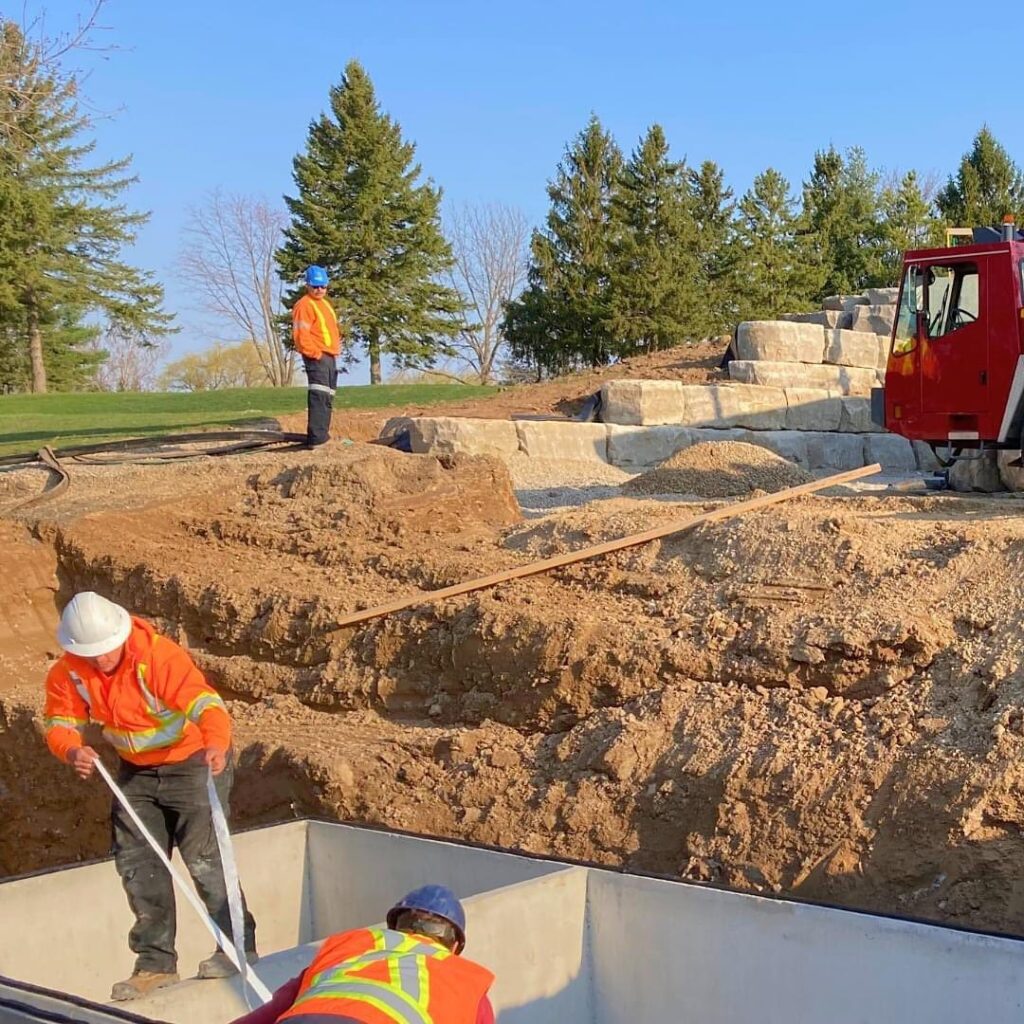
A bit like bespoke tailoring, alternative septic systems are designed to suit unique site requirements. Whether you’re dealing with limited space or finicky soil conditions, these systems adjust accordingly but expect your budget to stretch a bit more for these custom-fitted solutions.
Components of Septic System Costs
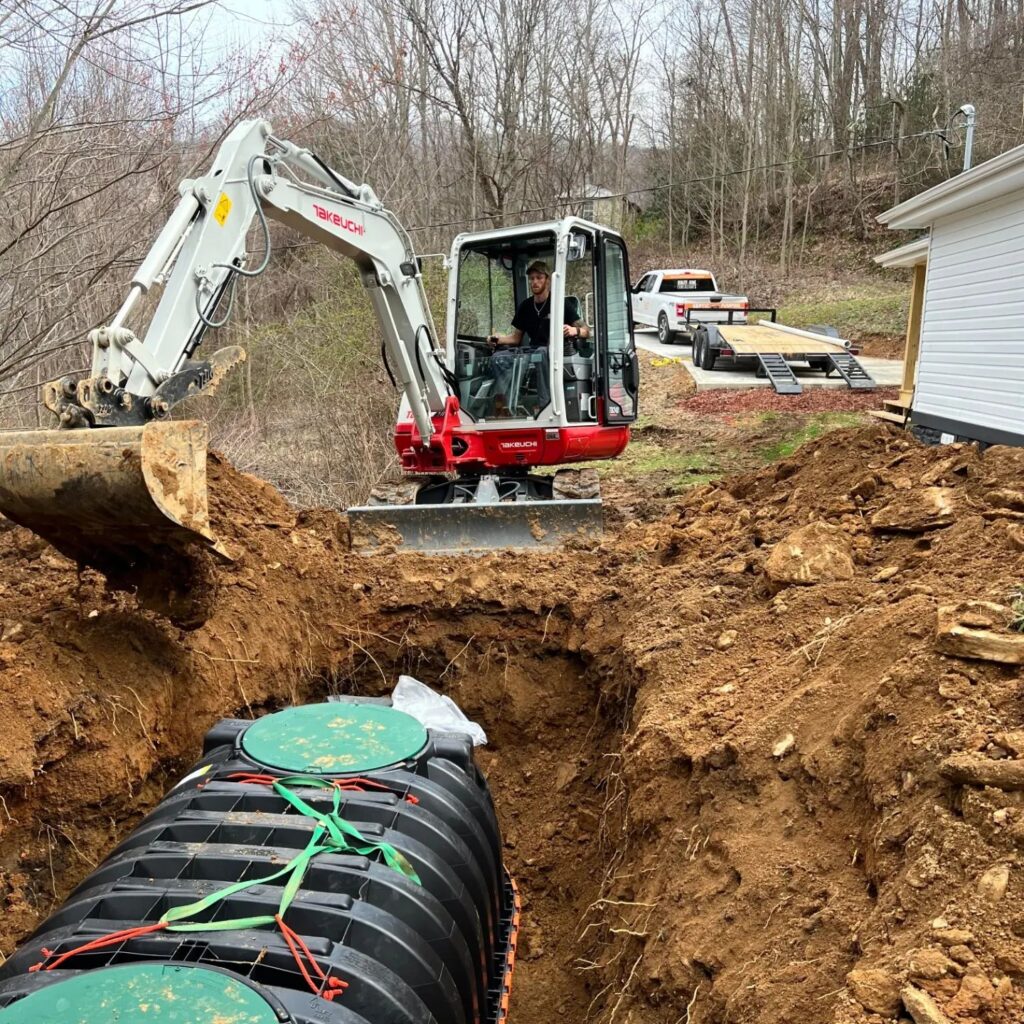
Much like pieces of a puzzle, various components come together to account for the total cost of septic system installation. Let’s break down these elements one by one:
Permits and Regulations
Before you even think about breaking ground, permits are a must-have accessory in this process; they ensure your system plays nice with local health regulations. Skimping here isn’t an option unless you fancy penalties.
Design and Size
The design and size of your septic system depend primarily on the expected daily wastewater flow and the soil’s absorption ability – this isn’t a one-size-fits-all deal.
Site Preparation and Accessibility
Rolled-up sleeves might be required to prep your site for installing a septic system, especially if accessibility is tight or if land needs clearing first.
Materials and Technology
Selecting materials and technology isn’t so much about keeping up with the Joneses but picking what will last long-term without frequent repairs or replacements.
Labor Costs
Labor costs definitely deserve attention as well since they can fluctuate based on factors such as regional wages and project duration.
Excavation
Digging in properly for your septic tank can’t be sidestepped; excavation is key but its cost hinges on soil type and depth needed for the job.
Installation
No room for cutting corners here – thorough installation ensures functionality without impending complications down the line.
Inspection
It guarantees everything’s up to snuff before your new system takes its first bow beneath your backyard.
And there we have it: A comprehensive peek into what goes into pouring money into septic system costs—from nose-diving into paperwork up front to breaking ground (and maybe even sweat) right up until giving that final nod after inspection. There’s quite a bit involved between those first scribbles of planning and last pat on firm packed earth – all pivotal in dialling down future faffs or financial frowns.
Economics Behind Septic System Installation and Upkeep

When considering the installation and maintenance of a septic system, one must realize that costs can swing wildly based on a number of factors. From the nitty-gritty details of local regulations to the broad strokes of geographical influences, it’s clear that your wallet might feel drastically different impacts depending on where you lay your roots.
Geographical Cost Variations
Funny enough, the price tag attached to installing septic systems isn’t one-size-fits-all. After all, soil quality, which varies from one location to another, plays a huge part in determining the complexity and type of system you’ll need. If we’re talking brass tacks, some regions have soil perfect for standard systems while others require more advanced—and expensive—solutions. Plus, labor costs aren’t playing on the same field either; what you’d pay for installation in a rural area might differ significantly from the rates in a bustling urban zone.
Local Regulatory Impacts
It’s not just about geography—local laws are also at play here, steering the cost ship. These ordinances can dictate everything from the type of septic system permitted to mandatory inspections and regular maintenance frequencies. They might even lay down strict rules on who can actually handle the install. And guess what? Meeting these local requirements often means shelling out more greenbacks.
To sum up all this cash talk, whether you’re knee-deep planning your new countryside villa or simply upgrading your suburban abode’s waste management system—you’ve gotta be prepared for the financial dance that comes with different parts of town and their rulebooks. Mix in some regional quirks and well… let’s just say there’s no avoiding a bit of homework!
When it comes to installing a septic system, getting your finances in order is as crucial as the technical considerations. Estimating the whole shebang means considering several aspects including size, type of system, and the lay of the land. Let’s dive deep into forecasting total costs and throw in some handy tips for stretching your dollars.
Estimating Total Installation Costs
You’ve gotta factor in every little thing when crunching numbers for septic system installation. It’s not just about the tank; you’ve also got to consider design fees, permits, soil testing, materials, and labor. Other variables like local regulations and the system’s complexity could hike up your bottom line. Keep in mind, the larger your system is, generally, the pricier it will get.
Budgeting Tips
A little bit of financial savvy goes a long way when planning for this investment. One savvy move is padding your budget – toss in an extra 10-20% on top of your estimated costs to cover those unpredictable surprises that inevitably pop up. Next, shop around; don’t just go with the first installer you come across. Getting multiple quotes can reveal a range of prices that’ll help you snag a better deal.
Financing Options
Cash is king but if it’s tight, there are other paths to consider. Some homeowners might tap into savings or take out a personal loan due to its usually quicker approval times. A home equity loan is another avenue since it often has lower interest rates compared to other lending options – though it might take longer to secure.
By staying nimble with your financing options, you can find a suitable path that doesn’t stretch your resources too thin.
This table below gives you a snapshot of what you’d be diving into financially for tanks of varying sizes.
| Tank Size (gallons) | Installation Cost (approx.) |
|---|---|
| 750-900 | $3,000-$4,500 |
| 1,000 | $5,000-$6,000 |
| 1,250 | $6,500-$8,500 |
| 1,500 | $7,000-$10,000 |
Note that these figures represent ballpark estimates which provide only a bit of insight due to various factors that influence final costs such as material selection, labor charges, soil composition, site accessability and local environmental codes.
Installing a septic system isn’t something to rush into blindly – it’s all about nailing down those figures and foreseeing potential hiccups along the way. A touch of econ know-how complements digging trenches perfectly!
Long-Term Operation Expenses
A fully operational septic system doesn’t just happen by chance — it’s the result of foresight and ongoing investment. Over the lifespan of your system, operating costs are as sure as death and taxes. These may encompass energy costs for aerated systems (where applicable), periodic pumping, inevitable repairs or part replacements and the potential for more significant overhauls or complete replacements should major problems arise. These expenses are sprinkled throughout your ownership so think of them as less of an if, more of a when.
Resale Value and Septic Systems
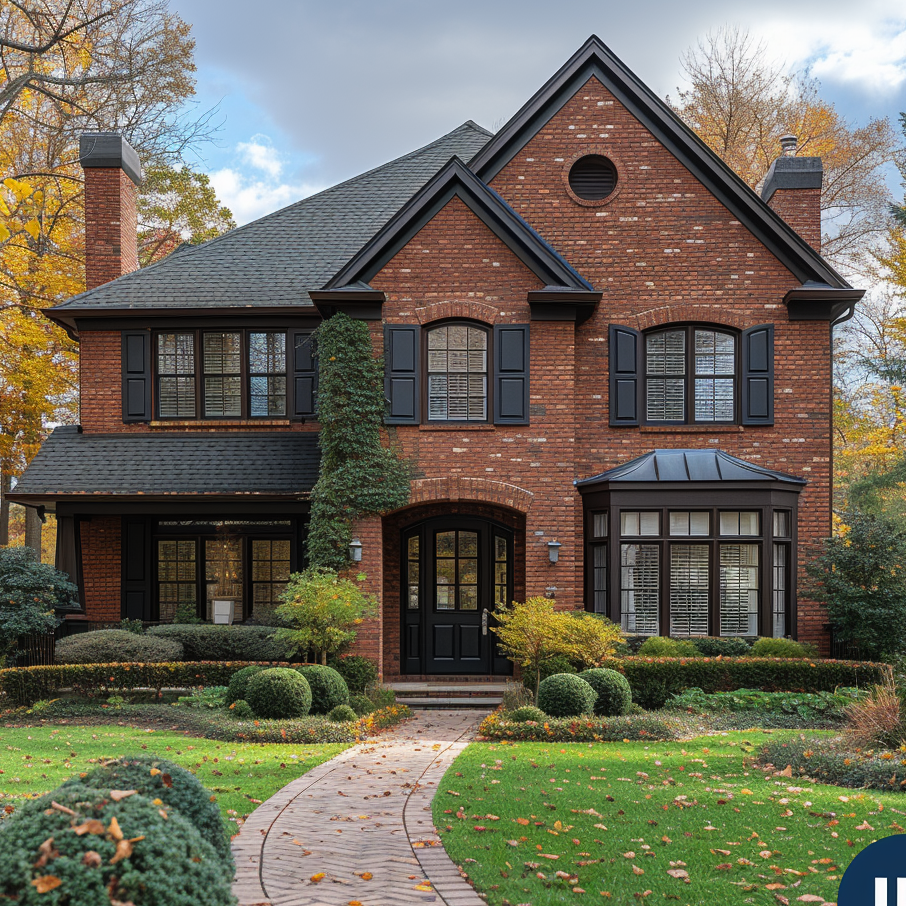
Now let’s chat about how septic systems play into the grand scheme of property value — they certainly pack an unexpected punch! A well-maintained system is often taken for granted but ignore its upkeep. It’s essential to have records proving that your septic system has been regularly serviced – this reassures potential buyers that they won’t face immediate issues after purchasing your home./
Having your system inspected before listing your property isn’t mandatory but it’s smart. Showcasing a clean bill of health for your septic can nudge negotiations in your favor.
This small investment will pay off in both operation simplicity and when it’s time to hand over the keys to someone else. Balancing initial install investments with regular maintenance and smart planning can ensure smooth sailing rather than choppy waters ahead.
Frequently Asked Questions (FAQ)
What considerations are paramount when estimating the expenses for a septic system in Florida?
When you’re figuring out the cost of a septic system in Florida, it’s a little like piecing together a puzzle. First off, you have to think about local soil conditions since they influence the type and extent of the drain field required. Next up, regulatory requirements set by Sunshine State authorities come into play, as well as the property’s size and its water usage patterns. Alternative septic systems may be needed if environmental challenges exist, which can adjust your price tag.
Can HomeAdvisor or similar services provide reliable estimates for septic tank installation costs?
Indeed, platforms like HomeAdvisor are pretty nifty for getting a ballpark figure on what you might cough up for septic tank install jobs. They compile data from homeowners across the United States and churn out average costs based on your ZIP code and project specifics. However, take these numbers with a grain of salt; your particular job could dance to a different tune depending on several factors unique to your home.
How should homeowners approach planning their budget for potential increases in septic system costs during installation?
When it comes to budgeting for that future septic system job at your house, think of it as planning a trip with some detours along the way. Set aside more than just the average cost—experts typically recommend adding around 25% as a cushion for those unexpected twists. Elements like unforeseen complexities or permit snafus can jack up prices, so better safe than sorry.
What is the correlation between septic tank size and household sewage volume?
The tie between septic tank size and how much waste your household generates is pretty direct—it’s all about ensuring space fits demand. Practically speaking, the larger your home (or the more people living there), the bigger tank you’ll need. Otherwise, you’ll face frequent pumping requirements or worse—the dreaded overflow.
_Are steel tanks an advisable option considering potential long-term maintenance issues?
Opting for steel tanks might seem like a solid move initially thanks to their toughness but tread lightly here; over time they can succumb to rust and corrosion. This could turn into costly repairs down the line or even require replacement sooner than other materials—chipping away at any initial savings.
_To what extent do conditions such as regular ground floods affect decisions regarding septic system installations?
_Let’s say you’re dealing with ground that likes to pool water after rains—that’s going to dictate quite a bit of your septic system strategy. It’s not just about finding dry land—it’s ensuring that your drain or leach field won’t become an unintended pond every time there’s heavy rainfall. You might need an alternative setup like a mound system that keeps things high and dry.
_Could renovations that add water-intensive features like an extra bathroom influence existing septic tank systems?
_Absolutely. Tacking on amenities that bump up water use—another shower or kitchen upgrades—impacts your septic system because it’s now handling increased water flow. It could mean upgrading parts of your system or retrofitting it entirely to cope with this new demand without any hiccups.
_What role does terrain complexity play in influencing labor costs for septic tank installation?
_Well, if your yard is throwing curveballs with hills or tons of rocks beneath the surface, brace yourself for higher labor costs. Complexity means more digging and maybe even special equipment—translating into extra hours and efforts by professionals installing your system.
_How do experts evaluate whether an existing ground sewage container needs repair or complete replacement?
_Scoping out an old sewage container is akin to giving it a thorough physical—professionals look at telltale signs like cracks or leaks that suggest wear-and-tear damage. But sometimes diagnostics reveal deeper issues—if repairs resemble sticking plasters on something needing surgery (a.k.a major overhaul), then replacement becomes inevitable.
_In terms of preventing contamination issues, what significance does proper planning have before initiating construction near sewer lines?
_It’s fair to say prevention is loads better than cure here. Proper upfront planning translates into meticulously mapping out where those sewer lines run before you begin construction close by—and keeping enough buffer space so that no accidental breaches occur during digging or groundwork thereafter.

I’m Tim Robberts, a seasoned wastewater treatment & septic system expert with over 40 years of experience in the field. My career began as a septic tank installer, and I quickly gained a reputation for my attention to detail and commitment to excellence. Over the years, I’ve honed my skills in designing, installing, and maintaining septic systems for residential and commercial properties.
